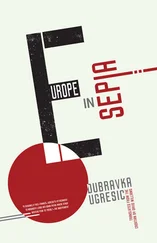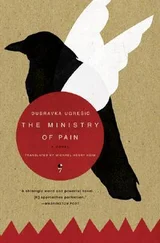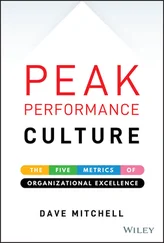Dubravka Ugresic - Karaoke Culture
Здесь есть возможность читать онлайн «Dubravka Ugresic - Karaoke Culture» весь текст электронной книги совершенно бесплатно (целиком полную версию без сокращений). В некоторых случаях можно слушать аудио, скачать через торрент в формате fb2 и присутствует краткое содержание. Год выпуска: 2011, Издательство: Open Letter, Жанр: Публицистика, на английском языке. Описание произведения, (предисловие) а так же отзывы посетителей доступны на портале библиотеки ЛибКат.
- Название:Karaoke Culture
- Автор:
- Издательство:Open Letter
- Жанр:
- Год:2011
- ISBN:нет данных
- Рейтинг книги:4 / 5. Голосов: 1
-
Избранное:Добавить в избранное
- Отзывы:
-
Ваша оценка:
- 80
- 1
- 2
- 3
- 4
- 5
Karaoke Culture: краткое содержание, описание и аннотация
Предлагаем к чтению аннотацию, описание, краткое содержание или предисловие (зависит от того, что написал сам автор книги «Karaoke Culture»). Если вы не нашли необходимую информацию о книге — напишите в комментариях, мы постараемся отыскать её.
Karaoke Culture — читать онлайн бесплатно полную книгу (весь текст) целиком
Ниже представлен текст книги, разбитый по страницам. Система сохранения места последней прочитанной страницы, позволяет с удобством читать онлайн бесплатно книгу «Karaoke Culture», без необходимости каждый раз заново искать на чём Вы остановились. Поставьте закладку, и сможете в любой момент перейти на страницу, на которой закончили чтение.
Интервал:
Закладка:
[1]Alan Kirby, “The Death of Postmodernism And Beyond” ( Philosophy Now , November/December 2006). Available at: http://www.philosophynow.org/issue58/The_Death_of_Postmodernism_And_Beyond
[2]Ibid., Keen.
3. KARAOKE IS A COMMUNIST INVENTION!
It Certainly Is!
In the Soviet Union there were postcards that were about the size of a 7” single, and they had recordings impressed on them that one could actually play. One of these postcards turned up in my mail. I put the postcard on the record player and heard a friend’s voice quietly singing away, wishing me all the best from the city he was visiting, Odessa I think. This quirky technological possibility actually existed; the voice of whoever bought the postcard could be recorded on it. This was the first time I ever heard karaoke, and it was in a time when karaoke, officially a Japanese invention, didn’t even exist.
In the seventies and eighties many Yugoslavs would go abroad to buy whatever they couldn’t get in Yugoslavia, or whatever was cheaper abroad. In Trieste, they bought fashionable clothes, jeans, and coffee; in Graz, or in Austrian shopping centers just over the border, they bought food; in Istanbul, fur coats and leather jackets. Eastern European countries weren’t popular shopping destinations. Most of the Yugoslavs who went to the Soviet Union worked for Yugoslav construction firms. They brought home beautiful wooden chess sets, cameras, movie cameras, musical instruments (violins, accordions, trumpets, saxophones), sheet music, classical music records, and easels, canvas, and paint. Particularly sought after were these little wooden chests with oil paints and brushes that you could wear on your shoulders like a pack. Everything was dirt-cheap.
The first time I went to Moscow in the mid-eighties I also bought a little paint set. The amateur painter sitting on a stool at an easel was part and parcel of the Russian Soviet landscape, apparent confirmation of Marx’s utopian vision that under communism people would throw off the chains of exploitation, enjoy their work, and dedicate their free time to the things they loved. A creek and patches of greenery, a chapel in the snow, a snow-laden hill, a frozen lake or lilac in bloom — these scenes were unthinkable without one compulsory detail: the amateur painter capturing them all at his easel.
In the Moscow of the mid-eighties, they thought of me as a “Westerner.” An elegant coat and soft leather boots rising up above the knee from Trieste, Shetland wool sweaters and a cashmere one from London, a good quality Yugoslav overcoat (in Russian a dublyonka ), a passport and hard currency (which got me into “Beryozka,” where I bought a fox-skin cap for myself, and Stolichnaya vodka and copies of The Master and Margarita for friends); all of these passed as irrefutable evidence of my “Westernness.” My Russian friends and acquaintances were what we might call fashion “incompatible,” but unlike me, they all had hobbies. Most of them played an instrument, most often the guitar. At evening gatherings they’d take turns playing Okudzhava and Vysotsky chansons, or their own chansons in the style of Okudzhava and Vysotsky. Most wrote poetry or dabbled in painting, and I didn’t know anyone who couldn’t take a decent photo. To me, a “Westerner,” this whole world of artistic amateurism was on the one hand quite delightful, but rather old-fashioned on the other. The truth is, there were all sorts in the underground Russian arts scene of the mid-eighties: amateurs without ambition, amateurs with ambition, swindlers, art lovers, informants, alcoholics, foreigners, political junkies, dissidents, losers, and not least, those who were sniffing around and hoping to be offered membership in the official state artistic organizations, which granted one “freelance” status.[1] There were also those such as Ilya Kabakov, who but a few years later would become darlings of the international art world.
The world of Soviet artistic amateurism seemed old-fashioned to me because by the mid-eighties the Yugoslav culture of amateurism (ham radio operators, choirs, community theatre, film clubs, amateur painters) was on the wane. Yugoslavs had passports and travelled. American films were in the cinemas, everyone had a TV, and these TVs showed popular American shows. Local cultural centers were slowly abandoned, “workers’ universities” offering adult education began to close, and slogans such as “Knowledge Is Power” and “Workplace Education” had simply lost their credibility. Many ham-radio operators had become professional technicians, and many of those involved in amateur film and photography circles, formerly weekend dabblers, had established themselves as artists, most of them as “conceptualists.” Amateurism kept its longest foothold in half-forgotten Esperanto clubs and the lively Haiku poetry scene, whose poets would send their work off to a mysterious Japanese commission, competing for an international Haiku poetry prize. Emerging out of the culture of amateurism, in the 1970s works by Yugoslav primitive artists were elevated to the status of “art,” attracted international attention and the accompanying big bucks, and then together with buyer interest vanished just a few years later.
I remember bits and pieces from the time of Yugoslav cultural amateurism. The small town in which I grew up had a “House of Culture” with a library, a movie theatre, a music school, and an amateur theatre with an impressive number of productions under its belt. My friend Alma’s father, a printer by trade, always played the leading man, and Ivanka, a typist and local beauty, the leading lady. In one production my father, who really didn’t have a clue about acting, had a bit part as an American — because he was tall. The general consensus in our small town was that only Americans were tall. The audience was particularly enamored with the Hawaiian shirt he wore. We called it a havajka (a “Hawaiian”) because it was brightly colored, the general consensus being that only Americans wore colorful shirts. The local audience enjoyed the performances, mainly because everyone had a personal connection to the actors. People often laughed in the wrong places, or commented loudly on this or that scene, but, having forgotten that the actors were their next-door neighbors and friends, they cried in equal measure.
All in all, alongside the cult of “technological progress,” culture itself was a “cult” ideological tenet under socialism. Education and self-education were the obligations of every progressive socialist individual, and love of the fine arts went hand in hand with humanism and the development of the well-rounded socialist personality , all of which found expression in “artistic” amateurism.[2]
With the disintegration of socialist Yugoslavia in the early nineties and the emergence of new states and the ideology of nationalism, the practice of amateurism has seen its re-articulation. Today, as before, institutional, financial, and media investment is geared towards nurturing local folk traditions (songs, dance, customs), there being both ideological and commercial imperatives at work. On the one hand, local folk traditions are useful in cultivating regional identities, and on the other, they’re handy in developing regional tourism. Under communism, folklore festivals offered symbolic support for the brotherhood and unity of the nations and nationalities[3] of Yugoslavia, and today these very same festivals offer symbolic support for the particularities of national and ethnic identities. The thing is, communism or post-communism, Eastern European amateurs dance their ring dances and pluck their tamburice[4] in exactly the same way they have danced and plucked down through the ages. It’s just that every now and then the ideological pretext changes.
Читать дальшеИнтервал:
Закладка:
Похожие книги на «Karaoke Culture»
Представляем Вашему вниманию похожие книги на «Karaoke Culture» списком для выбора. Мы отобрали схожую по названию и смыслу литературу в надежде предоставить читателям больше вариантов отыскать новые, интересные, ещё непрочитанные произведения.
Обсуждение, отзывы о книге «Karaoke Culture» и просто собственные мнения читателей. Оставьте ваши комментарии, напишите, что Вы думаете о произведении, его смысле или главных героях. Укажите что конкретно понравилось, а что нет, и почему Вы так считаете.












